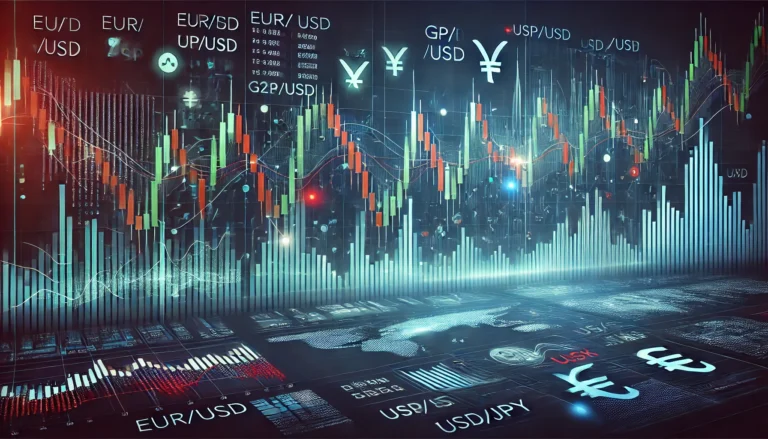
how to compute profit in forex is a crucial skill for traders to ensure financial success and informed decision-making.
Forex trading can be an exciting yet challenging venture. One of the most crucial skills for any trader is knowing how to compute profit in forex. Understanding profit calculations is vital, as it directly impacts your trading success and financial stability. When you enter the world of forex, knowing how to measure your earnings and losses will keep you informed and empowered.
Many traders, both beginners and seasoned professionals, struggle with profit calculations. This confusion often arises from various factors like fluctuating market conditions, currency pairs, and leverage options. Grasping the importance of computing profit will help you make informed decisions, ultimately leading to better trading strategies and favorable outcomes.
Leverage in forex can change without notice, altering your potential profits significantly. Understanding how this impacts your trades is essential. For more information on this topic, check out our article on Leverage Changes Without Notice.
Understanding How to Compute Profit in Forex
So, what does it mean to compute profit in forex? Simply put, it involves calculating the difference between your entry and exit points in a trade, factoring in the currency pair’s exchange rate and the lot size you are trading. This process can be complicated by variations in pip values and leverage, but understanding these elements is crucial for any trader.
Profit computations can often confuse traders because they depend on both technical and market-related factors. For instance, if you buy a currency pair at 1.1000 and sell it at 1.1050, you have made a 50 pip profit. However, if you used a high leverage ratio, your profit (or loss) can be magnified many times over, making it essential to understand how leverage influences your overall results. An example of this would be if you traded 1 standard lot (100,000 units) and each pip is worth $10; that 50 pip move would net you a profit of $500!
Pro’s and Con’s for How to Compute Profit in Forex
When it comes to how to compute profit in forex, there are pros and cons. Let’s break it down:
Pros
- Clear Understanding: Knowing how to compute profit helps you understand your trading performance.
- Better Decision Making: Accurate profit calculations lead to informed choices in trades.
- Risk Management: Understanding potential profits allows you to manage risks effectively.
Cons
- Complex Calculations: New traders may find calculations confusing and overwhelming.
- Market Volatility: Rapid changes in the market can affect profit outcomes.
- Leverage Risks: Misunderstanding leverage can lead to unexpected losses.
To navigate these pros and cons, here are some step-by-step solutions:
- Use Calculators: Leverage online profit calculators to simplify the computation process.
- Educate Yourself: Read and learn from credible sources to enhance your understanding of profit calculations.
- Practice with Demo Accounts: Use demo trading accounts to practice calculating profits without risking real money.
For advanced traders, it’s important to remember that while calculating profits is crucial, you should also consider potential market fluctuations and adjust your strategies accordingly. Monitor economic indicators that affect currency pairs to predict movements better.
As a note, if you’re interested in future trading trends, check out our analysis on the EURUSD forecast April 22, 2025.
Frequently Asked Questions
1. What is a pip in forex? A pip is the smallest price move that a given exchange rate can make. In most currency pairs, it is equal to 0.0001. Understanding pips is essential for computing profit in forex.
2. How does leverage affect my profits? Leverage allows you to control a larger position with a smaller amount of capital. While it can amplify profits, it also increases the risk of significant losses.
3. How can I calculate profit in forex? To calculate profit, subtract the entry price from the exit price and multiply by the number of pips and the pip value based on your lot size.
4. Why do I need to know my profit? Knowing your profit helps you assess your trading performance, manage risks, and make informed decisions in the future.
5. Can I lose more than my initial investment? Yes, with high leverage, it is possible to lose more than your initial investment. Proper risk management is crucial to avoid this scenario.
Conclusion
Understanding how to compute profit in forex is a vital skill for any trader. By mastering this, you empower yourself to make informed trading decisions. Remember, this issue can be managed with practice and ongoing education. Stay informed to continuously improve your trading strategies!
Trading can be daunting, but remember, every expert was once a beginner. Keep learning, stay curious, and embrace the journey!
Recommended Next Steps
If you’re eager to enhance your knowledge further, consider the following steps:
- Read books and articles on forex trading.
- Join online trading communities and forums.
- Utilize demo accounts to practice without financial risk.
- Attend webinars and workshops to learn from experienced traders.
- Stay updated on market news to understand currency movements.
If you’re looking to master the art of trading, remember how to compute profit in forex is essential for your success!
Stay ahead of the game by reading expert-backed advice on this topic Investopedia, Forex.com
Expand Your Knowledge
- 📌 Forex Trading Learning Road Map
- 📌 Forex Trading Course with no Fees
- 📌 Forex Trading Issues, Problems, and Solutions
- 📌 Forex Daily Forecast & Live Updates
- 📌 Forex Fundamental & News Analysis: Tomorrow’s Market Movers & Trade Opportunities
- 📌 Forex Education Hub: Learn & Profit
- 📌 Forex Technical Analysis, Indicators & EA’s
Start Trading Today
Ready to take your forex trading to the next level? Open an account with Exness, one of the most trusted platforms in the industry. 👉 Sign Up Now and trade with confidence!
My recommended broker stands out with ultra-low spreads for beginners, instant withdrawals, and zero spread accounts for pro traders.
Trusted since 2008, lightning-fast execution, no hidden fees, and a secure, transparent trading environment—giving you the edge you need to succeed. 🚀
Watch this helpful video to better understand how to compute profit in forex:
In the world of Forex trading, understanding how to calculate profit and loss is essential for making informed decisions. The calculation relies on a straightforward formula that takes into consideration the lot size traded, the pip value based on the currency pair, and the number of pips gained or lost during the trade. To determine profit, you multiply the lot size by the pip value and then by the number of pips gained. Conversely, for a loss, the same formula applies but uses the number of pips lost instead. For instance, in a scenario where a trader enters a short position on the pound-dollar pair with a lot size of 1.2 at a price of 1.48170 and exits at 1.47160, the profit can be calculated by determining the total pips made, which is 101 pips. Using the formula, the profit realized would be 1,212 US dollars. This example illustrates how traders can effectively quantify their successes in the market.
In another example, consider a trader who entered a long position of 0.6 lots at 123.25, only to exit at 122.73, yielding a loss. Here, the trader calculates the pips lost, which amounts to 52 pips. Applying the same formula for loss calculation, the trader would find that the loss incurred is 31,200 Japanese yen. It’s important to note that most trading platforms automatically convert any losses into the trader’s deposit currency, simplifying the process. Understanding these calculations can greatly enhance a trader’s ability to manage their risk and make more strategic trading decisions. Whether you’re a novice or an experienced trader, mastering these computations is a key aspect of successful Forex trading.
For those looking to refine their trading strategies, keeping an eye on technical indicators can be beneficial. One such indicator is the nasdaq 50 day moving average, which helps traders identify trends and potential reversal points in the market. By incorporating this and other similar indicators into trading strategies, traders can improve their chances of making profitable trades while minimizing losses.
YouTube Video Library: Related Videos
How To Calculate Your Position Size In Forex…
How to calculate Risk Reward Ratio #forex #forextrading #shorts
How To Place The PERFECT Stop loss #stoploss
How I Find Perfect Entries
Calculating Lot Size #shorts
When you get the best profit from forex trading #forextrading
Good vs Bad Entries
Note: The video above is embedded from YouTube and is the property of its original creator. We do not own or take responsibility for the content or opinions expressed in the video.





